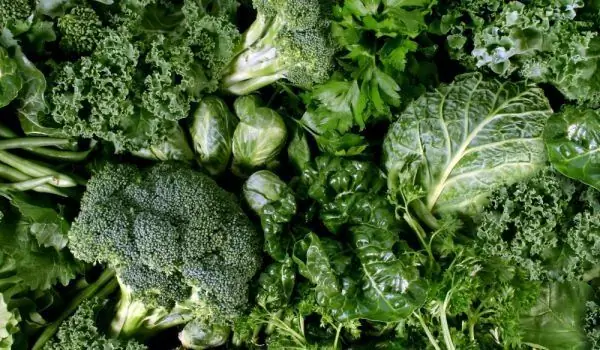2025 Author: Jasmine Walkman | [email protected]. Last modified: 2025-01-23 10:18
Human organs cannot be most efficient in producing energy from carbohydrates or fats without the help of lipoic acid. It is a nutrient also classified as an antioxidant that plays a direct role in protecting cells from oxygen damage. In addition, supplying the body with several different antioxidants, including vitamins E and C, would not be successful in the absence of lipoic acid.
An essential characteristic of lipoic acid is its ability to function in both water-based and fat-based environments.
The way cells produce lipoic acid It is not entirely clear, but it is thought to be obtained by taking two sulfur atoms from an amino acid called methionine, and the rest of the chemical structure is derived from a fatty acid called octanoic acid.
Functions of lipoic acid
- Energy production - lipoic acid finds its place at the end of a process called glycolysis, in which cells create energy from sugar and starch.
- Prevention of cell damage - An important role in this regard is played by the antioxidant function of lipoic acid and its ability to help prevent oxygen-based damage to cells.
- Maintaining the supply of other antioxidants - lipoic acid interacts with water-soluble (vitamin C) and fat-soluble (vitamin E) substances and therefore helps prevent deficiencies in both types of vitamins. Other antioxidants such as coenzyme Q, glutathione, and NADH (a form of niacin) are also dependent on the presence of lipoic acid.
Lipoic acid deficiency
Because lipoic acid works closely with a number of other nutrients and antioxidants, it is difficult to determine the symptoms of a deficiency of this acid on your own. Therefore, these symptoms are associated with symptoms of deficiency of these substances, namely weakened immune function and increased susceptibility to colds and other infections, memory problems, decreased muscle mass, inability to develop.
Because lipoic acid is contained in the mitochondria (energy production units) of animal cells, people who do not eat animal products may be at higher risk for lipoic acid deficiency. Vegetarians who do not eat green leafy vegetables may also be at similar risk, as these chloroplasts contain most of the lipoic acid.
Due to the fact that lipoic acid protects proteins during the aging process, older people may be at greater risk of deficiency.
Similarly, because lipoic acid is used to regulate blood sugar, people with diabetes may be at greater risk of deficiency.
People with poor protein intake and especially sulfur-containing amino acids are also at greater risk because lipoic acid derives its sulfur atoms from these sulfur-containing amino acids.
Because lipoic acid is mainly absorbed through the stomach, people with stomach ailments or low stomach acid may also be at increased risk of deficiency.
Side effects of lipoic acid
It is possible that symptoms such as nausea or vomiting, upset stomach and diarrhea may occur. Isolated cases of allergic reactions such as skin rash, itching and urticaria have also been reported. Due to the improved absorption of glucose, a drop in blood sugar levels may also occur. Symptoms that resemble hypoglycemia may occur - headache, sweating, dizziness and more.

Benefits of lipoic acid
Lipoic acid may play an important role in the prevention and / or treatment of the following diseases: cataracts, chronic fatigue syndrome, chronic muscle fatigue, diabetes, glaucoma, AIDS, hypoglycemia, impaired glucose tolerance, insulin resistance, liver disease, lung cancer, neurosis diseases in children, radiation sickness.
In the vast majority of dietary supplements, lipoic acid is contained in the form of alpha-lipoic acid. Once inside the body, this form of lipoic acid can be converted into a second form called dihydrolipoic acid or DHLA. Lipoic acid usually available in doses of 25-50 milligrams, assuming a daily limit of 100 milligrams, unless explicitly recommended for specific diseases such as diabetes.
Sources of lipoic acid
- Green plants that have a high concentration of chloroplasts. Chloroplasts are key sites for energy production in plants and require lipoic acid for this activity. For this reason, broccoli, spinach and other green leafy vegetables are dietary sources of lipoic acid.
- Animal foods - mitochondria are the critical points in the production of energy in animals, and are a major place to find lipoic acid. For this reason, tissues with many mitochondria (such as the heart, liver, kidneys, and skeletal muscle) are good places to find lipoic acid.
Recommended:
Ellagic Acid - All The Benefits

Ellagic acid is a water-soluble antioxidant in the class of polyphenols. For a time, the scientific world was immersed in experiments on the study of its unique properties. They called it the future of proper treatment for all cancers, cardiovascular diseases and aging.
Nutrition In Chronic Gastritis With Increased Acid Secretion

When you suffer from chronic gastritis, it is recommended to eat fresh milk, yogurt, butter, cottage cheese, sour cheese, cream; tender lean meat; boiled language; lamb leg soups; lean patch; lean fish; soft-boiled eggs; Panagyurishte eggs, steamed omelets, various creams;
Top Sources Of Folic Acid

Folic acid , also known as vitamin B9 or folate, is a substance responsible for a number of vital processes in the human body. It is involved in DNA production, cell growth, amino acid synthesis, controls cholesterol levels, supports the functioning of the immune system.
Powerful Antioxidant: Alpha Lipoic Acid

Alpha lipoic acid is a type of fatty acid. Its main function is the transformation of glucose from carbohydrates into energy. It is a natural ingredient in the cells of the human body. This type of acid also regulates glucose metabolism. Its benefits are numerous.
Lipoic Acid - Application, Benefits And Where To Get It

Lipoic acid is an organic compound that acts as a powerful antioxidant in the human body. Our body naturally produces lipoic acid, but so does it contained in various foods and nutritional supplements. Studies show that lipoic acid plays an important role in the process of weight loss, diabetes and other health conditions.

